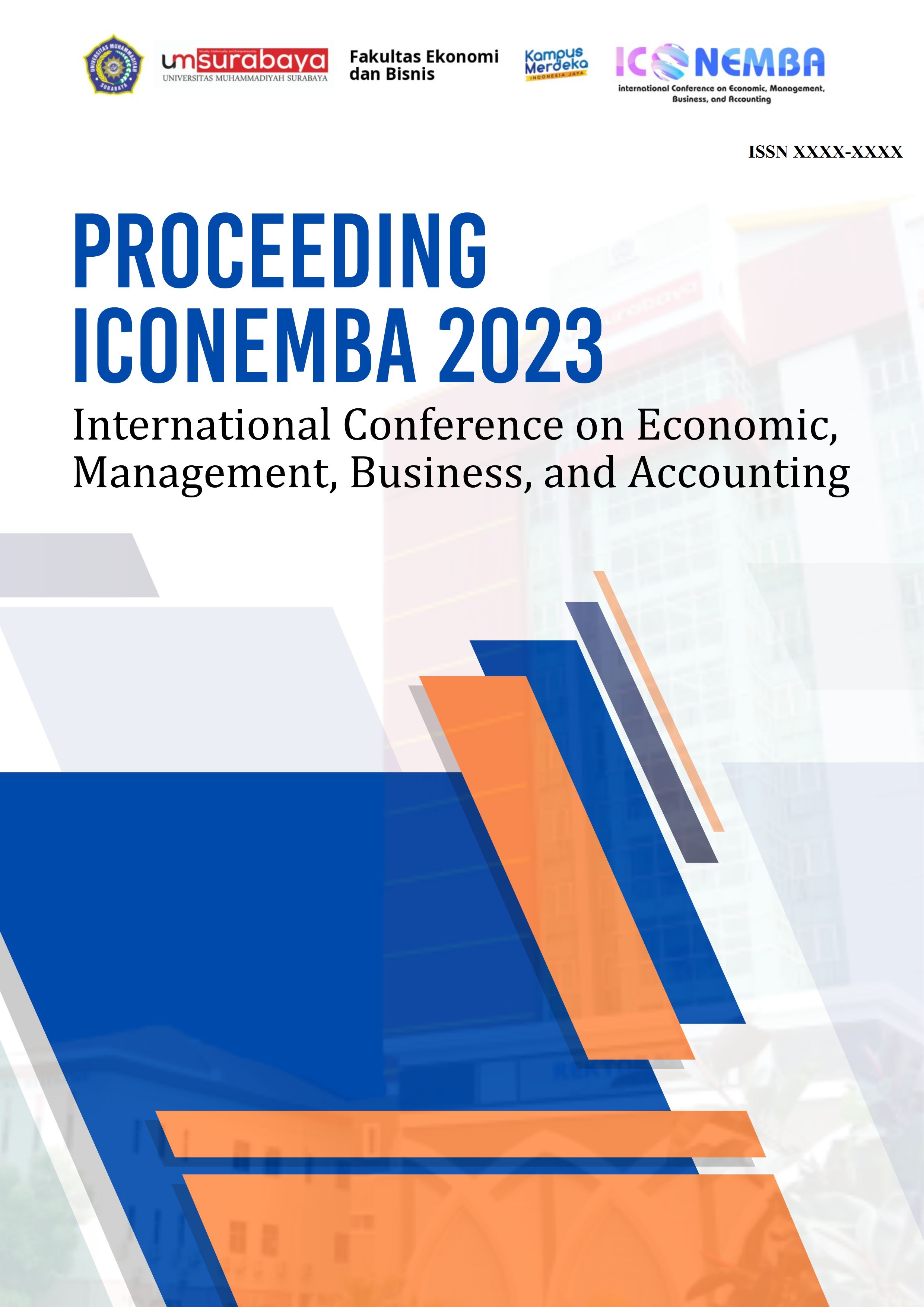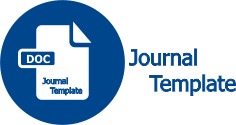DOES THE PRESENCE OF WOMEN ON THE AUDIT COMMITTEE AFFECT AUDIT FEES? EMPIRICAL EVIDENCE FROM THE BANKING INDUSTRY IN INDONESIA
DOI:
https://doi.org/10.30651/iconemba.v1i1.22650Keywords:
Audit Committee, Gender Diversity, Proportion, Audit Fees, Banking in IndonesiaAbstract
The aim of this research is to investigate the relationship between female representation on audit committees and audit fees, considering various factors. The research methodology employed is multiple linear regression analysis. Data was gathered from secondary sources, specifically the banking industry listed on the IDX between 2018 and 2022, utilizing specific criteria. The analysis encompassed the presence and proportion of female audit committee chairs, employing purposive sampling. This research endeavors to shed light on whether female audit committee chairs exert a significant positive influence on audit fees. It aims to offer a clearer perspective on the impact of female representation at the leadership level of audit committees on audit fees. The findings reveal that female audit committee chairs significantly affect audit fees positively, while the proportion of female audit committee chairs has a significant negative impact on audit fees. Consequently, the banking industry in Indonesia could contemplate appointing female audit committee chairs to mitigate their company's risks.
References
Abbott, L. J., Parker, S., Peters, G. F., & Raghunandan, K. (2003). The association between audit committee characteristics and audit fees. Auditing, 22(2), 17–32. https://doi.org/10.2308/aud.2003.22.2.17
Aldamen, H., Hollindale, J., & Ziegelmayer, J. L. (2018). Female audit committee members and their influence on audit fees. Accounting and Finance, 58(1), 57–89. https://doi.org/10.1111/acfi.12248
Barber, B. M., & Odean, T. (2001). Boys will be Boys: Gender, Overconfidence, and Common Stock Investment*. The Quarterly Journal of Economics, 116(1), 261–292. https://doi.org/10.1162/003355301556400
Bart, C., & McQueen, G. (2013). Why women make better directors. International Journal of Business Governance and Ethics, 8(1), 93–99. https://doi.org/10.1504/IJBGE.2013.052743
Byrnes, J. P., Miller, D. C., & Schafer, W. D. (1999). Gender differences in risk taking: A meta-analysis. Psychological Bulletin, 125(3), 367–383. https://doi.org/10.1037/0033-2909.125.3.367
Carcello, J. V., Hermanson, D. R., Neal, T. L., & Riley, R. A. (2002). Board Characteristics and Audit Fees. Contemporary Accounting Research, 19(3), 365–384. https://doi.org/10.1506/CHWK-GMQ0-MLKE-K03V
Charness, G., & Gneezy, U. (2012). Strong Evidence for Gender Differences in Risk Taking. Journal of Economic Behavior & Organization, 83(1), 50–58. https://doi.org/https://doi.org/10.1016/j.jebo.2011.06.007
DeAngelo, L. E. (1981). Auditor size and audit quality. Journal of Accounting and Economics, 3(3), 183–199. https://doi.org/https://doi.org/10.1016/0165-4101(81)90002-1
Dwyer, P. D., Gilkeson, J. H., & List, J. A. (2002). Gender differences in revealed risk taking: evidence from mutual fund investors. Economics Letters, 76(2), 151–158. https://doi.org/https://doi.org/10.1016/S0165-1765(02)00045-9
Farrell, K. A., & Whidbee, D. A. (2000). The Consequences of Forced CEO Succession for Outside Directors. The Journal of Business, 73(4), 597–627. https://doi.org/10.1086/209656
Gilson, S. C. (1990). Bankruptcy, boards, banks, and blockholders: Evidence on changes in corporate ownership and control when firms default. Journal of Financial Economics, 27(2), 355–387. https://doi.org/https://doi.org/10.1016/0304-405X(90)90060-D
Goodwin-Stewart, J., & Kent, P. (2006). The relation between external audit fees, internal audit and the audit committee. Accounting and Finance, 46(13), 387–404.
Gul, F. A., Hutchinson, M., & Lai, K. M. Y. (2013). Gender-Diverse Boards and Properties of Analyst Earnings Forecasts. Accounting Horizons, 27(3), 511–538. https://doi.org/10.2308/acch-50486
Gul, F. A., Srinidhi, B., & Tsui, J. S. L. (2011). Board Diversity and the Demand for Higher Audit Effort. SSRN Electronic Journal, 1–43. https://doi.org/10.2139/ssrn.1359450
Hallahan, T. A., Faff, R. W., & Mckenzie, M. D. (2004). Geeft verschillende regressievergelijken weer. Financial Services Review, 13, 57–78.
Harahap, D. Y., Irawady, C., Bede, D., & Jayanti, D. D. (2018). Audit fee: Evidence from Indonesia after Adopting International Standards on Auditing (ISAs). Review of Integrative Business and Economics Research, 7(1), 170–182.
Harford, J. (2003). Takeover bids and target directors’ incentives: the impact of a bid on directors’ wealth and board seats. Journal of Financial Economics, 69(1), 51–83. https://doi.org/https://doi.org/10.1016/S0304-405X(03)00108-9
Hay, D. C. (2017). Audit fee research on issues related to ethics. Current Issues in Auditing, 11(2). https://doi.org/10.2308/ciia-51897
Jensen, M. C., & Meckling, W. H. (1976). Theory of the firm: Managerial behavior, agency costs and ownership structure. Journal of Financial Economics, 3(4), 305–360. https://doi.org/https://doi.org/10.1016/0304-405X(76)90026-X
Jianakoplos, N. A., & Bernasek, A. (1995). Are women more risk everse? Economic Inquiry, 36(4), 620–630.
Johnson, J. E. V., & Powell, P. L. (1994). Decision Making, Risk and Gender: Are Managers Different? British Journal of Management, 5(2), 123–138. https://doi.org/10.1111/j.1467-8551.1994.tb00073.x
Kalelkar, R. (2017). Effect of audit and compensation committee membership overlap on audit fees. Asian Review of Accounting, 25(1), 34–57. https://doi.org/10.1108/ARA-12-2014-0128
Kesner, I. F. (1988). Directors’ Characteristics and Committee Membership: An Investigation of Type, Occupation, Tenure, and Gender. Academy of Management Journal, 31(1), 66–84. https://doi.org/10.5465/256498
Klein, A. (1998). Firm performance and board committee structure. Journal of Law and Economics, 41(1), 275–303. https://doi.org/10.1086/467391
Levin, I. P., Schneider, S. L., & Gaeth, G. J. (1998). All Frames Are Not Created Equal: A Typology and Critical Analysis of Framing Effects. Organizational Behavior and Human Decision Processes, 76(2), 149–188. https://doi.org/https://doi.org/10.1006/obhd.1998.2804
Mustapha, A., Isiaka, A. O., & Babatunde, K. A. (2020). Audit Committee Effectiveness and Audit Fee among Listed Deposit Money Banks in Nigeria. Asian Journal of Economics, Business and Accounting, 20(4), 1–14. https://doi.org/10.9734/ajeba/2020/v20i430329
Omer, W. K. H., & Al-Qadasi, A. A. (2020). Board of directors’ effectiveness and monitoring costs. Managerial Auditing Journal, 35(4), 477–497. https://doi.org/10.1108/MAJ-01-2019-2153
Powell, M., & Ansic, D. (1997). Gender differences in risk behaviour in financial decision-making: An experimental analysis. Journal of Economic Psychology, 18(6), 605–628. https://doi.org/https://doi.org/10.1016/S0167-4870(97)00026-3
Schubert, R. (2006). Analyzing and managing risks – on the importance of gender differences in risk attitudes. Managerial Finance, 32(9), 706–715. https://doi.org/10.1108/03074350610681925
ZamZami, M. R., Wibowo, N. C., Ana Wati, S. F., Ghozali, I., & Imawan, M. R. (2024). Rancang Bangun Sistem Informasi Berbasis Web Menggunakan Metode Waterfall. CYCLOTRON, 7(01), 61–66. https://doi.org/10.30651/cl.v7i01.21084
Shivdasani, A. (1993). Board composition, ownership structure, and hostile takeovers. Journal of Accounting and Economics, 16(1), 167–198. https://doi.org/https://doi.org/10.1016/0165-4101(93)90009-5
Simunic, D. A. (1980). The Pricing of Audit Services: Theory and Evidence. Journal of Accounting Research, 18(1). https://doi.org/10.2307/2490397
Sitompul, S., & Nasution, S. K. (2019). The Effect of Car, BOPO, NPF, and FDR on Profitability of Sharia Commercial Banks in Indonesia. Budapest International Research and Critics Institute (BIRCI-Journal) : Humanities and Social Sciences. https://api.semanticscholar.org/CorpusID:201460391
Riswanda, M., & Ghozali, I. (2020). Tips & Trick Android Root:Cara Cepat dan Mudah Belajar Tips & Trick Android. Jakad Media Publishing. www.nandroid19.com
Srinivasan, S., & Richardson, S. A. (2005). Consequences of financial reporting failure for outside directors: Evidence from accounting restatements and audit committee members. Journal of Accounting Research, 43(2), 291–334. https://doi.org/10.1111/j.1475-679x.2005.00172.x
Thiruvadi, S., & Huang, H. (2011). Audit committee gender differences and earnings management. Gender in Management: An International Journal, 26(7), 483–498. https://doi.org/10.1108/17542411111175469
Watson, J., & McNaughton, M. (2007). Gender Differences in Risk Aversion and Expected Retirement Benefits. Financial Analysts Journal, 63(4), 52–62. https://doi.org/10.2469/faj.v63.n4.4749
Xie, B., Davidson, W. N., & DaDalt, P. J. (2003). Earnings management and corporate governance: the role of the board and the audit committee. Journal of Corporate Finance, 9(3), 295–316. https://doi.org/https://doi.org/10.1016/S0929-1199(02)00006-8
Ziad SHAKHATREH, M., & Adnan ALSMADI, S. (2021). Determinants of Audit Fees and the Role of the Board of Directors and Ownership Structure: Evidence from Jordan. Safaa Adnan ALSMADI / Journal of Asian Finance, 8(5), 627–0637. https://doi.org/10.13106/jafeb.2021.vol8.no5.0627









